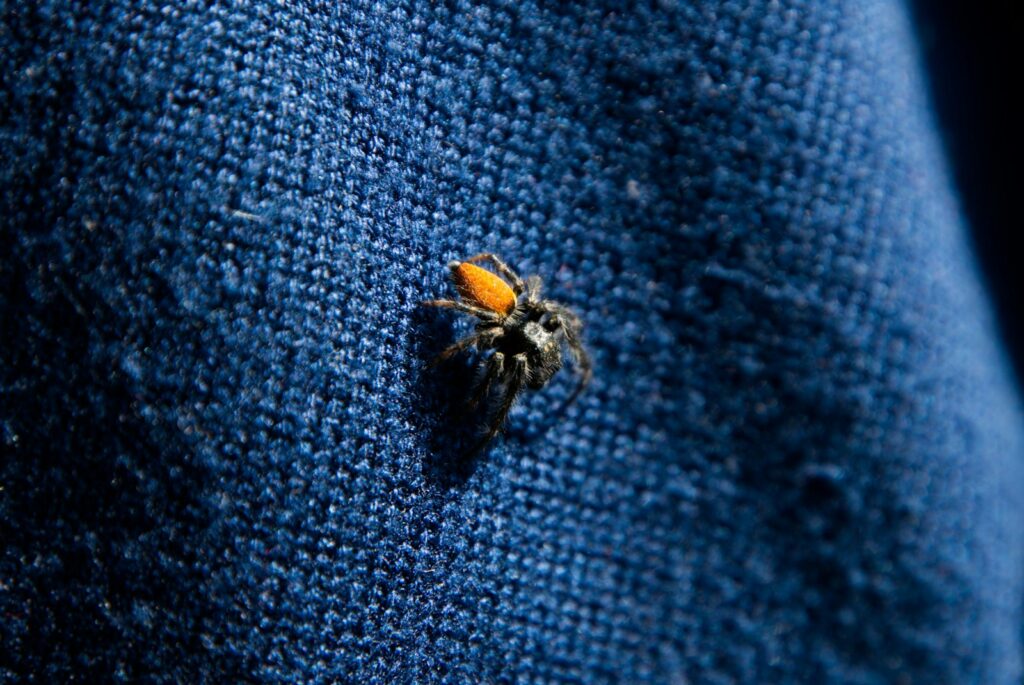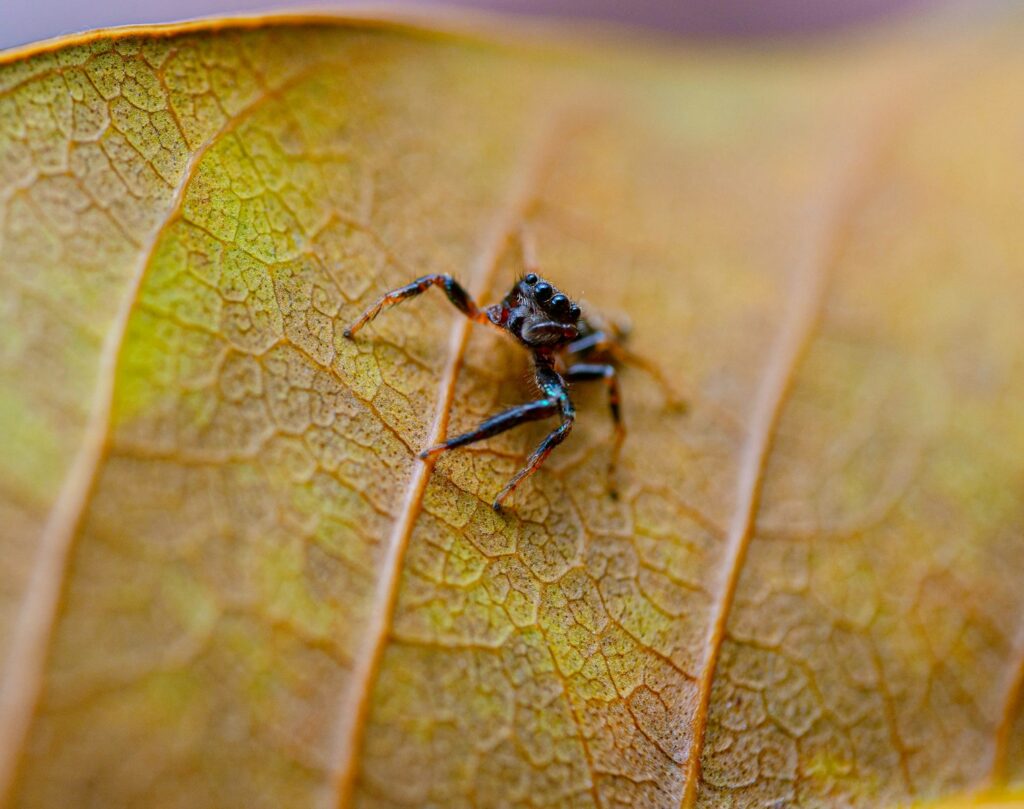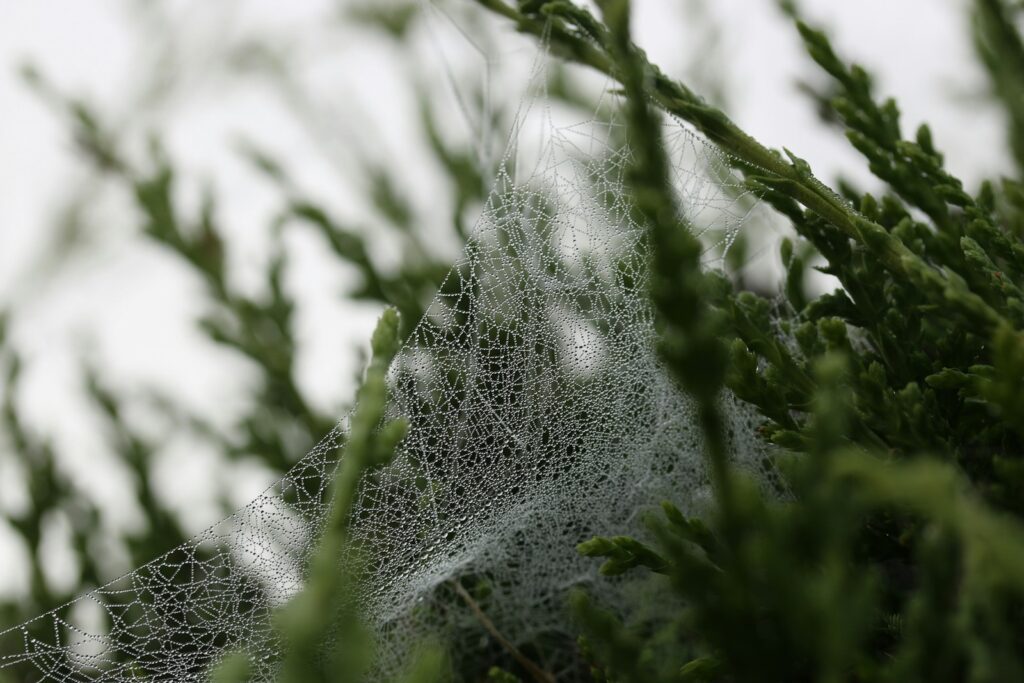In the vast world of arachnids, where tarantulas and black widows often steal the spotlight, there exists a diminutive yet formidable creature that defies our expectations about dangerous spiders. The smallest venomous spider in the world, measuring mere millimeters across, packs a potent punch that belies its tiny stature. This fascinating creature reminds us that in nature, size doesn’t always correlate with danger. From its elusive habitat to its remarkable hunting techniques, this miniature marvel demonstrates that evolutionary adaptations come in all sizes. Join us as we explore the captivating world of the smallest venomous spider – a testament to nature’s ability to create deadly efficiency in the most compact packages.
Meet the Patu Digua: Nature’s Venomous Miniature

The title of world’s smallest venomous spider belongs to Patu digua, discovered in 1973 by renowned arachnologist Arthur Chickering in Colombia’s dense rainforests. This microscopic predator measures a mere 0.37 millimeters (0.015 inches) in body length for males, making it barely visible to the naked human eye. Despite its minuscule size, Patu digua possesses fully functioning venom glands and delivery system that it uses effectively to immobilize prey. The spider belongs to the family Symphytognathidae, known for containing some of the smallest spider species on the planet, though Patu digua stands out as particularly tiny even among its diminutive relatives.
Geographical Distribution and Habitat Preferences

Patu digua has a remarkably limited geographical distribution, with confirmed populations primarily in the tropical rainforests of Colombia, particularly in the Chocó Department near the Pacific coast. These spiders thrive in the humid understory of dense rainforests, where they construct their webs in the small spaces between leaves, in crevices of tree bark, or among leaf litter on the forest floor. Their microhabitat preferences relate directly to their size – they occupy ecological niches that larger spiders simply cannot access. Recent expeditions suggest the possibility of related species existing in similar tropical environments across Central and South America, though comprehensive surveys remain challenging due to the spider’s minute size and the difficulty of accessing its preferred habitats.
Physical Characteristics and Adaptations

Despite its microscopic proportions, Patu digua displays remarkable physical adaptations that have allowed it to survive and thrive. Its body exhibits extreme miniaturization while maintaining all essential spider anatomical features, including eight eyes, eight legs, and specialized pedipalps in males for reproduction. The spider’s coloration tends toward pale browns and yellows, providing effective camouflage against bark and leaf litter. Perhaps most impressive is its specialized spinning apparatus, which despite its tiny size can produce silk strong enough to support its web structures. Evolutionary biologists consider Patu digua a fascinating example of how natural selection can push the boundaries of miniaturization while maintaining functional complexity.
The Potent Venom of a Microscopic Hunter

The venom of Patu digua represents a marvel of biochemical efficiency, containing neurotoxic compounds that rapidly immobilize prey despite being produced in extraordinarily small quantities. While the spider produces only picoliters of venom (trillionths of a liter), this toxin is specifically evolved to target the nervous systems of the tiny arthropods it hunts, primarily consisting of springtails, mites, and minuscule flying insects. The venom works through a complex cascade of neurotoxic effects that disrupt nerve signal transmission in its prey, leading to rapid paralysis. Although potentially deadly to microscopic creatures, this venom poses virtually no threat to humans due to both its minute quantity and the spider’s inability to penetrate human skin with its tiny fangs.
Web-Building Techniques and Hunting Strategies

Despite its diminutive size, Patu digua constructs intricate webs that showcase remarkable engineering skill. These webs typically span just a few millimeters across but display the classic orb-web structure with radiating spokes and concentric circles. The spider employs a specialized technique to create ultra-thin silk strands – some measuring just a few molecules in thickness – that are nearly invisible but sufficiently strong to ensnare tiny prey. Unlike larger spiders that may wait at the center of their webs, Patu digua often hides at the periphery, rushing forward when vibrations indicate trapped prey. This ambush strategy conserves energy and reduces the spider’s exposure to potential predators, representing an efficient adaptation to its microhabitat ecological niche.
Reproductive Biology and Life Cycle

The reproductive biology of Patu digua represents a fascinating study in miniaturization challenges. Female specimens, slightly larger than males at approximately 0.40 millimeters, produce remarkably few eggs compared to larger spider species – typically just 2-5 eggs per clutch. These eggs are proportionally large relative to the mother’s body size, suggesting significant resource investment in each potential offspring. The mating ritual involves the male approaching the female’s web with caution, performing specialized vibratory signals to prevent being mistaken for prey. After successful copulation, females create tiny silk egg sacs that they guard vigilantly until the spiderlings emerge. The entire life cycle from egg to mature adult spans approximately 3-4 months, with spiderlings undergoing several molts as they grow to their still-minuscule adult size.
Scientific Challenges in Studying Microscopic Spiders

Researching Patu digua presents unique challenges that have limited our comprehensive understanding of this species. Traditional arachnological field methods often prove inadequate for creatures so small they can easily pass through standard collecting nets. Scientists must employ specialized collection techniques including fine-mesh aspirators and specially designed microhabitat sampling equipment. Laboratory observation requires high-powered microscopy, with scanning electron microscopes often necessary to study anatomical details. The delicate nature of these spiders means specimens are easily damaged during collection and preservation, further complicating research efforts. Despite these obstacles, recent advances in digital microscopy and DNA analysis are gradually expanding our knowledge of these elusive arachnids.
Ecological Importance in Microhabitats

Despite their tiny stature, Patu digua and related minute spiders play crucial ecological roles within their microhabitats. As predators specializing in extremely small arthropods, they help regulate populations of microorganisms that larger predators cannot efficiently target. Their predation on springtails, mites, and other decomposers helps maintain balance in the nutrient cycling processes of forest floor ecosystems. Additionally, these spiders serve as prey for slightly larger arthropods, forming an important link in the food chain between microscopic and more visible forest inhabitants. Ecological research suggests that the removal of these tiny predators could potentially trigger cascading effects through rainforest decomposition systems, highlighting their importance despite their near-invisibility in the broader ecosystem.
Conservation Status and Environmental Threats

The conservation status of Patu digua remains poorly assessed due to insufficient population data, though experts express concern about its future. The spider’s extremely limited geographic range makes it particularly vulnerable to habitat destruction – a major issue considering the rapid deforestation occurring in its Colombian rainforest home. Climate change presents another significant threat, as these spiders appear highly sensitive to fluctuations in humidity and temperature within their microhabitats. Unlike more adaptable species, Patu digua shows limited ability to adjust to changing environmental conditions or colonize new areas. Pollution, particularly from agrochemicals that affect arthropod populations broadly, may further impact these spiders by disrupting their food webs and reproductive processes.
Evolutionary Significance and Miniaturization

Evolutionary biologists consider Patu digua a remarkable example of extreme miniaturization in arthropods, raising fascinating questions about the lower size limits for complex organisms. This spider challenges our understanding of how small a fully functional predator with complex behaviors can become while maintaining necessary biological systems. The evolutionary pressures driving this miniaturization likely include reduced competition for resources, access to abundant prey in microhabitats, and decreased predation risk through virtual invisibility. Genetic studies suggest that the miniaturization process involved both the reduction of cell sizes and a decrease in overall cell numbers compared to larger relatives. This evolutionary path represents a specialized adaptation rather than an ancestral state, with molecular evidence indicating that these tiny spiders evolved from larger ancestors through selection for progressively smaller body sizes.
Comparison to Other Minute Venomous Creatures

In the realm of miniature venomous creatures, Patu digua stands out even among other remarkably small venomous organisms. While certain venomous ants like the Pyramica genus measure just 2mm, they still dwarf our microscopic spider by nearly five times. Some venomous mites approach similar size ranges but typically employ simpler venom delivery systems. The blue-ringed octopus, while much larger overall, possesses venom glands proportionally similar in efficiency to those of Patu digua, demonstrating parallel evolution of concentrated toxins. Perhaps the closest comparison comes from certain parasitoid wasps that measure under 1mm yet deliver potent venom to their hosts, though their venom serves primarily to preserve rather than kill their prey. These comparisons highlight the remarkable evolutionary convergence toward venom use across different miniaturized predator lineages.
Cultural Impact and Public Perception

Despite its biological significance, Patu digua remains virtually unknown to the general public, existing largely in the realm of specialized arachnological research. This obscurity stands in stark contrast to its larger relatives like black widows or tarantulas, which feature prominently in cultural representations of dangerous spiders. The few times these microscopic spiders appear in popular science content, they typically serve as curiosities highlighting nature’s extremes rather than as subjects of fear. This relative anonymity presents both challenges and opportunities for conservation advocates, who must work to generate interest in protecting creatures that most people will never see or encounter. Some science educators have begun using Patu digua as an engaging example to teach concepts of biodiversity, adaptation, and the importance of microhabitats in educational settings.
Future Research Directions and Unanswered Questions

The study of Patu digua and related minute spiders represents a frontier in arachnological research with numerous unanswered questions awaiting investigation. Scientists particularly hope to analyze the complete venom composition using advanced proteomics techniques, potentially uncovering compounds with pharmacological applications despite their minuscule quantities. Questions about the spider’s sensory perception remain largely unexplored – how these tiny creatures navigate their world with nervous systems measured in mere hundreds of neurons presents fascinating neurological puzzles. Population geneticists seek to understand the connectivity between isolated populations and whether cryptic species diversity exists within what we currently recognize as Patu digua. Perhaps most urgently, conservation biologists need comprehensive surveys to establish baseline population data and monitor how these spiders respond to ongoing environmental changes in their vulnerable rainforest habitats.
Conclusion

The story of Patu digua serves as a powerful reminder that nature’s most remarkable adaptations often exist at scales we rarely observe. This tiny venomous spider, barely visible to the human eye, has evolved specialized hunting strategies, potent venom, and complex behaviors that allow it to thrive in its microhabitat niche. While it may never capture public attention like its larger, more visible arachnid relatives, this miniature marvel deserves recognition for pushing the boundaries of biological miniaturization while maintaining the complex functions of a predatory lifestyle. As rainforest habitats face increasing threats from human activity, the fate of this smallest venomous spider hangs in the balance – a microscopic canary in the environmental coal mine, whose preservation requires us to value biodiversity at all scales, even those too small to see with the naked eye.

